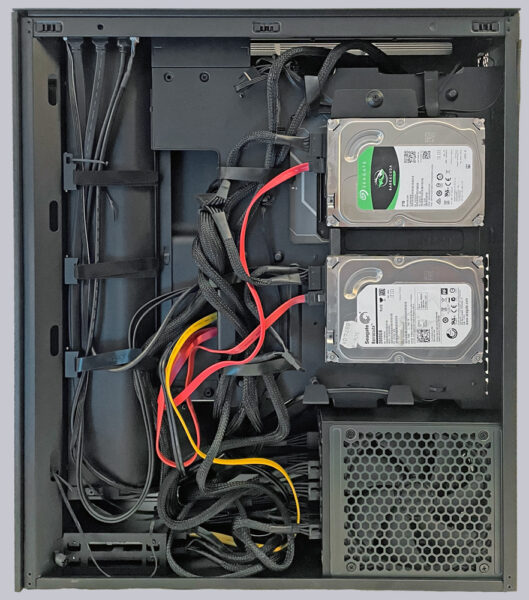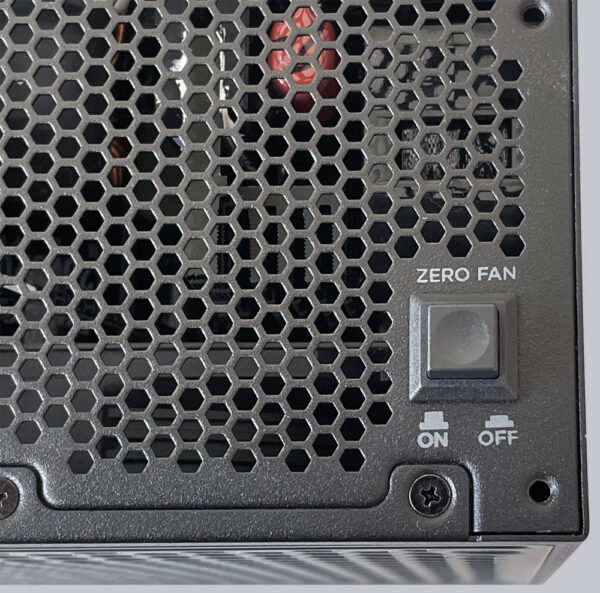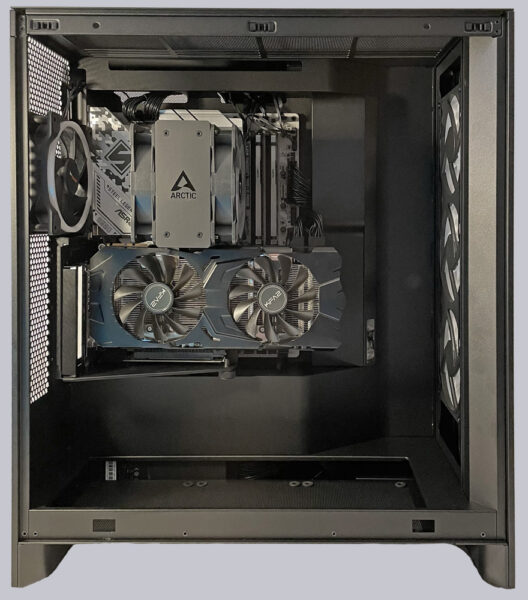
Practical testing …
We tested the NZXT C1500 on the following system:
| Mainboard | ASRock B650 Steel Legend WiFi |
| CPU | AMD Ryzen 7 7700 |
| Graphics card | KFA2 Nvidia GTX 1070 |
| RAM | Kingston Fury 2×16 GB DDR5 6000 |
| SSD | Samsung 850 Evo 500 GB |
| Case | NZXT H7 Flow RGB (2024) |
The installation went without complications. Due to the ample space of the recently tested NZXT H7 Flow RGB case, laying the required cables was also unproblematic. Despite the medium-sized case, the cable length was sufficient to reach even remote locations without any problems.

No noise can be heard from the PSU when it is switched on, as the fan does not yet start up in zero-fan mode. The PSU is therefore operated passively as long as the temperature does not exceed a certain threshold value.

Let us now turn our attention to the voltages of the PSU. A Uni-T Ut71C was used to measure the voltage and a Novkit PM04DE for the power.
The voltages read from the sensors at idle are as follows:
12V: 11.904V
5V: 5.040V
3.3V: 3.296V
At a low load of 120W, the voltages were as follows:
12V: 11.963V
5V: 5.064V
3.3V: 3.297V
Under load with 360W, the voltage reacts as follows:
12V: 11,969V
5V: 5,078V
3.3V: 3,294V
The measured voltages are always slightly below the specified voltages, but always within tolerance. It should also be noted that the voltage remains constant under load.
NZXT C1500 Result and general impression …


